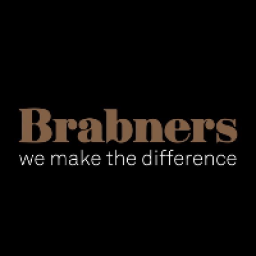There are a variety of issues you must consider to ensure you retain talent within your family business.
As part of our family business campaign, we recently considered the challenges and importance of bringing the right employees into a family run/ owner managed business. We also looked at how the effective use of probationary periods can help ensure any issues are dealt with in a timely fashion.
However, in our latest blog we consider the importance of retaining the right people within your business and hopefully, securing a long and prosperous relationship.
What can employers do to take care of their employees?
We have previously discussed the key financial and non-financial benefits employers may wish to consider to initially attract and subsequently retain talented individuals. However, in today’s competitive market, it is more important than ever to think outside of the box and consider what innovative benefits could be offered in order to stand out as an employer that goes the extra mile to take care of their employees.
Benefits of a positive working culture.
Taking the concept of talent retention further, although having attractive benefits may set the foundations, the development of a positive working culture and environment can not only help you to recruit and retain a stable and skilled workforce but can also improve both yours and your employees’ health and wellbeing. It can also help reduce the costs which are typically attached to high staff turnover.
Furthermore, a positive working culture can promote teamwork, raise morale, increase productivity and collaboration – all of which are beneficial to a growing business.
How to create a positive working culture?
There are many key elements that build a positive working culture. This includes the following:
- Clear and honourable leadership: Ensuring that the family/ leaders of the business are visible and approachable at all levels, as far as reasonably practicable. Employees need to feel empowered by their leaders, by avoiding a hierarchical culture and ensuring that the leadership recognise and reward employees where their performance is good.
- Shared vision and values: Many employers have implemented written visions and values having involved their employees in producing these to ensure buy in and engagement with the direction that the business is heading.
- A sense of belonging: Employees need to feel valued and to understand their worth to the business. Many employers get this wrong by making employees feel replaceable, thus losing the buy in and engagement that the individual employee could otherwise give.
- Clear and open lines of communication: Toxic working environments often evolve from a lack communication and rumours within the workplace. Ensuring transparency and consistent communication can help to alleviate this. To do so, it is key to deliver important messages to all employees at the right time and prove employees the opportunity to openly discuss key business decisions.
- Regular appraisals and one to one’s: Not only are these key from a HR management perspective, but giving employees a regular opportunity to meet with managers and raise concerns or indeed receive praise for good work can nip minor issues in the bud before they escalate into problems and concerns. Managers shouldn’t make a habit of rescheduling ‘one to one’s’ as it demonstrates by turning up that you respect the individual’s time and care about what they have to say, even when you are extremely busy dealing with other things in the business.
- Continuous change and development: It is easy to become complacent when a business is steadily growing and succeeding. However, employees can become deflated and unchallenged, which leads to employees straying away to explore new opportunities. Carrying our regular reviews with the individuals, as well as regular team reviews should help to highlight opportunities for change.
- Dealing with problems and concerns: Unfortunately not all working cultures can be positive 100% of the time and where issues do arise, it is important that these are dealt with quickly and efficiently, yet with compassion and a commitment to resolve concerns rather than allowing them to escalate.
A strong working culture will always have the employees at its core. The emphasises the fact that it is critical to ensure the right people are brought into the business at all levels, particularly as the business grows and it can become harder to maintain a family like culture.
An opportunity for change
As we emerge from the COVID-19 pandemic, businesses have the opportunity to make changes that they perhaps previously could not or did not realise there was a need to. Many businesses are taking this opportunity to not only retain a more flexible and agile approach to working but making physical changes to the office workspace to promote a more collaborative and positive culture.
This may include building break out areas, collaborative workspaces, quiet workspaces and fun areas in which colleagues can hang out at break times and carry out team activities.
However, whilst moving to hybrid working can have great benefits, employers should be careful not to lose the close connections that make family businesses such a success. The dangers of hybrid working could see many office spaces become quite a disengaged working environment, as opposed to the lively working hubs that they should be.
Support and advice
Our team of employment law experts have vast experience in supporting and advising owner managed and/or family-owned businesses to help achieve their goals. If your business is in need of some Employment/HR guidance and support, please contact a member of our Employment Team who can assist.
This contains a general overview of information only. It does not constitute, and should not be relied upon, as legal advice. You should consult a suitably qualified lawyer on any specific legal problem or matter.
 Elektec Ltd
Elektec Ltd








